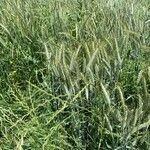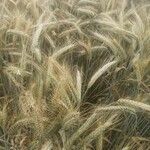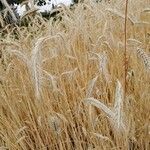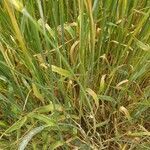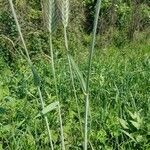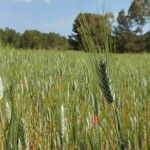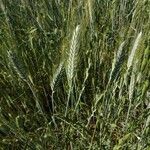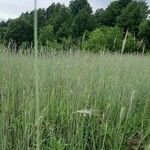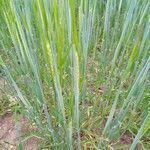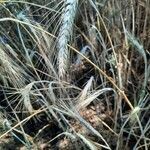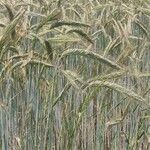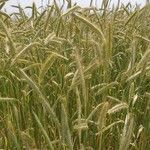Culms erect, 80–180 cm tall, scabrous or villous below spike. Leaf blade glaucous, 10–20 × (0.2–)0.5–1 cm, glabrous or abaxial surface sparsely pilose. Spike erect, 5–15 × 1–1.5 cm excluding awns; rachis tough. Spikelets ca. 15 mm excluding awns, with 2(or 3) florets. Glumes linear or linear-lanceolate, 10–12 mm, scabrous along keels, margin membranous, apex usually acuminate. Lemma strongly compressed, 12–15 mm, pectinately spinose-ciliate along keels; awn 30–50 mm. Palea equaling lemma. Fl. and fr. Jul–Aug. 2n = 14.
Robust annual (biennial) 6–12 dm, branched from the base; lvs flat, 3–7(–10) mm wide; spikes stout, 6–15 cm, arcuate-nodding; spikelets disarticulating above the glumes and between the florets; glumes equal, 7.5–15 mm, the strong keel scabrociliate; lemmas 12–16 mm, pectinate-ciliate on the keel and margins, with awn 2–7 cm; anthers ca 8 mm; 2n=14, 16, 27–29. European cultigen, often spontaneous in disturbed sites with us, but probably never persistent.
An annual plant. It is a cereal grass. It grows to 60-200 cm high. It spreads to 30 cm across. It produces tufts. The stem is erect and bluish green. The leaves are rough and narrow. They are 30 cm long and 8 mm wide. The leaves are smooth on the lower surface. The flowers are dense, slender spikelets. They are 20 cm long. The spikelets are 2-flowered and strongly awned.
